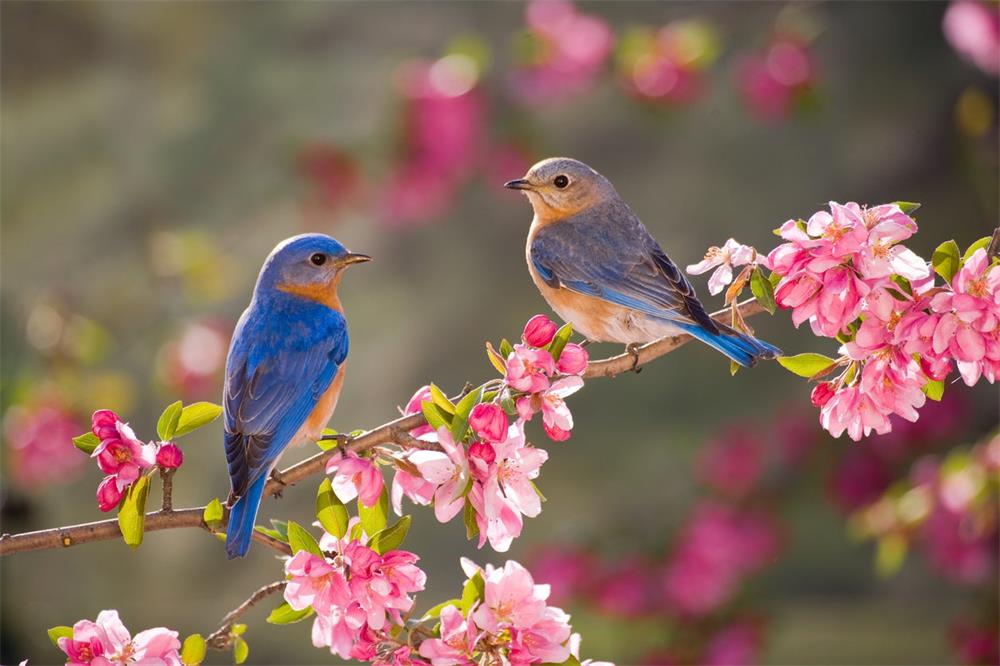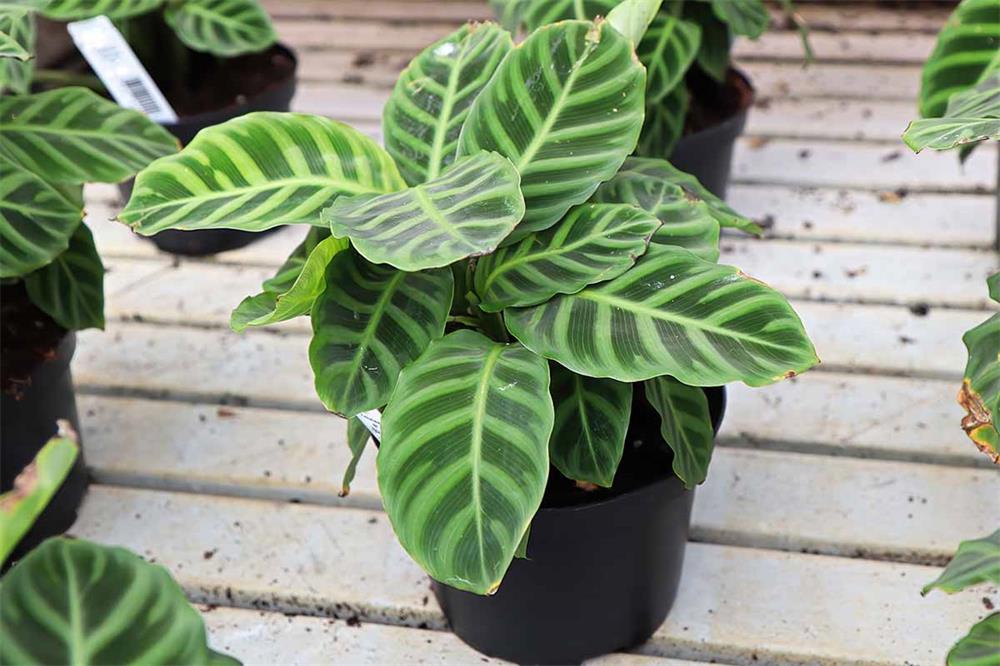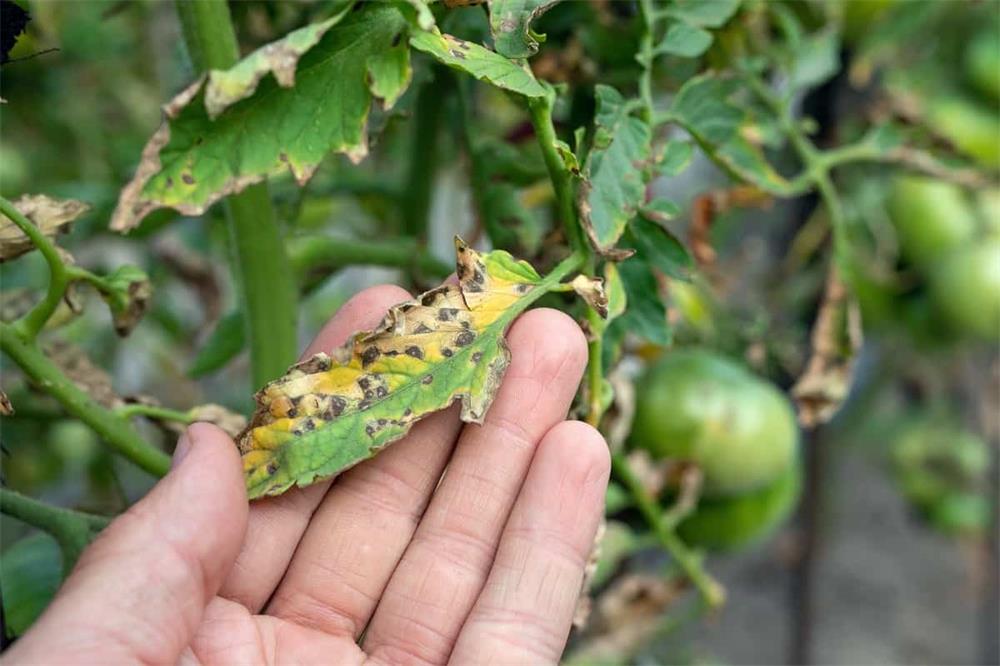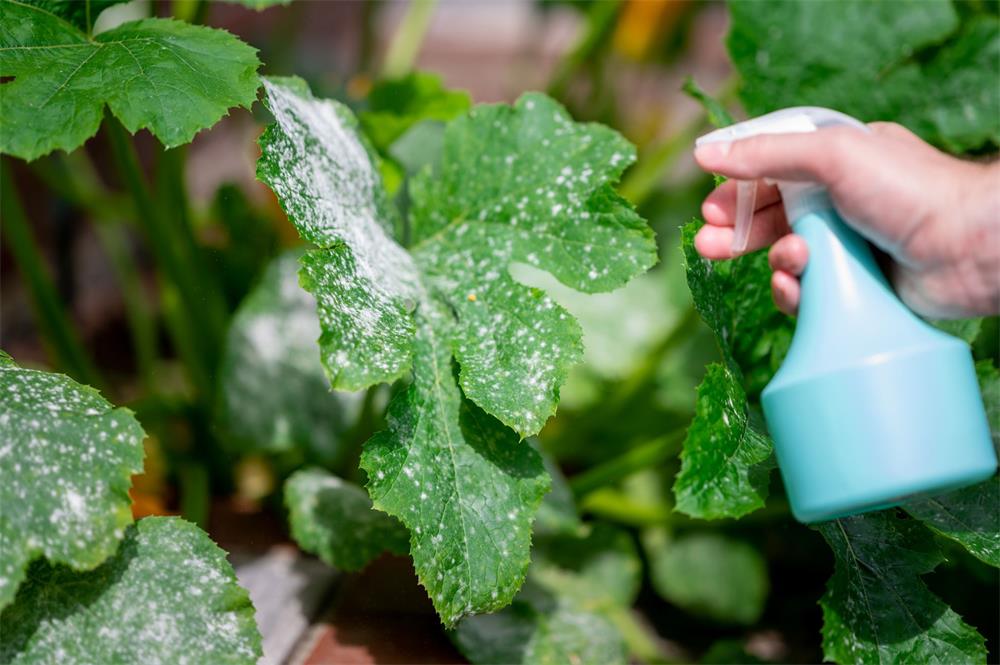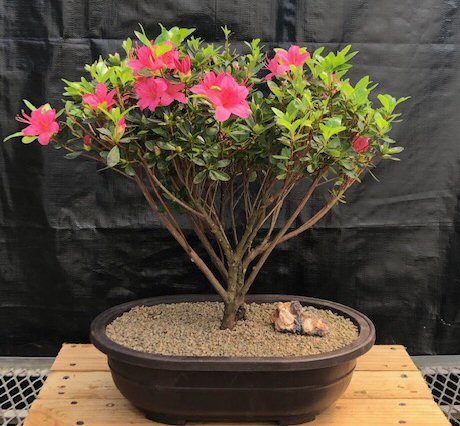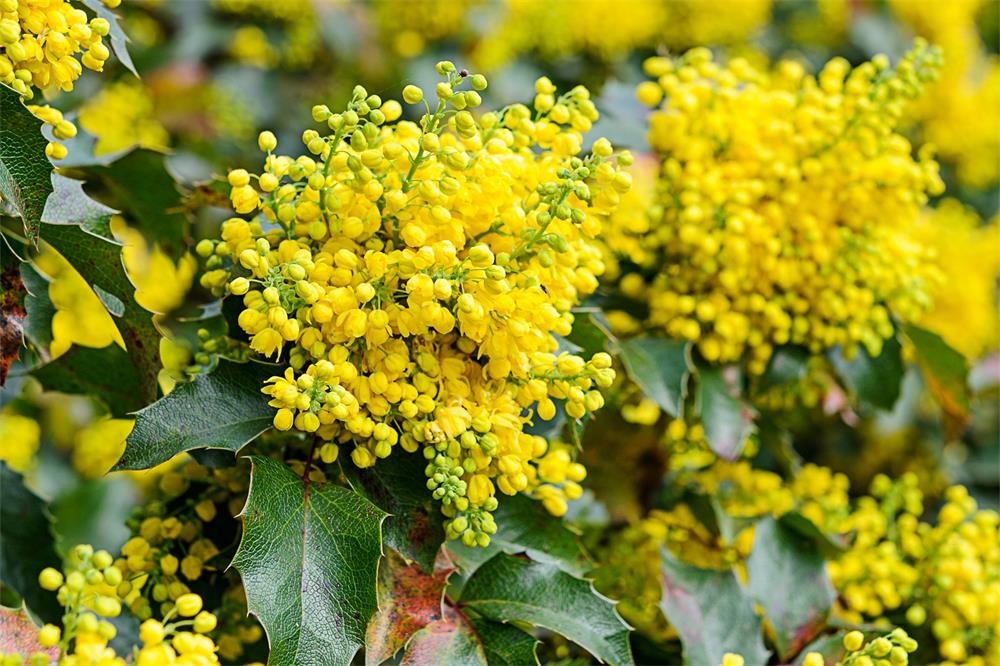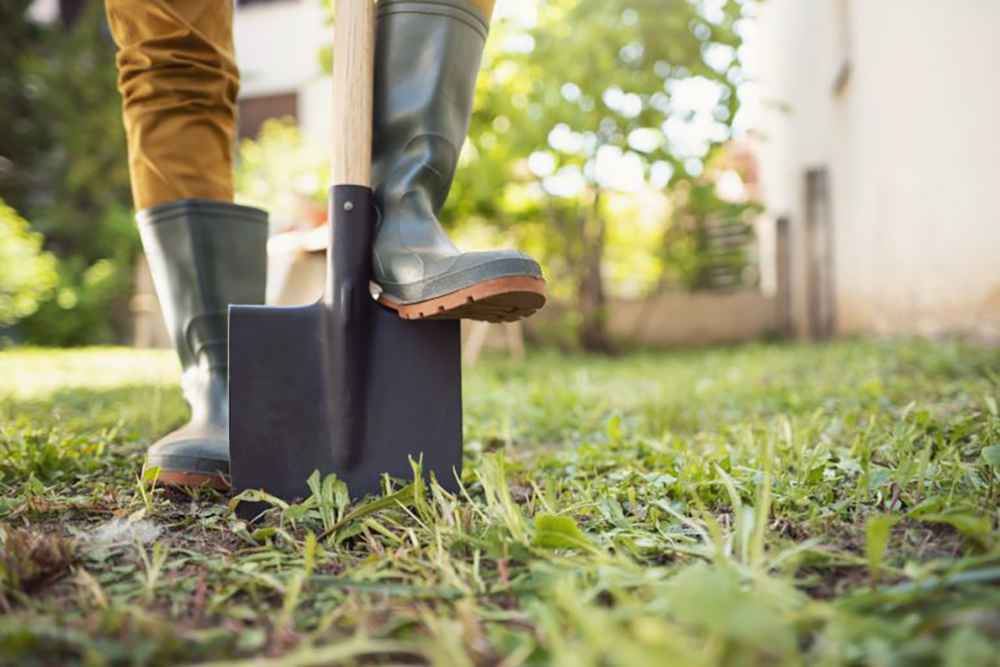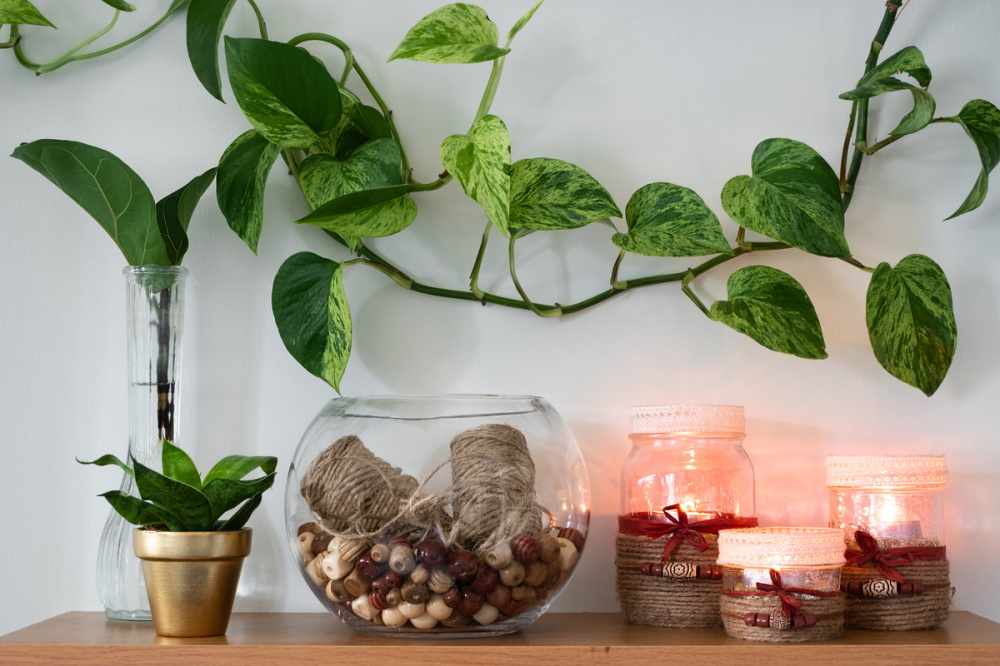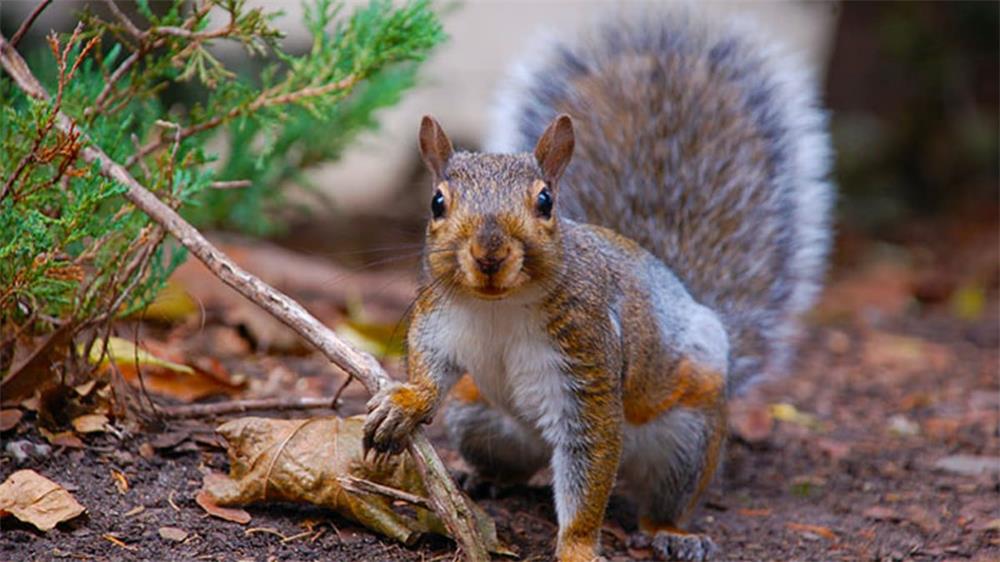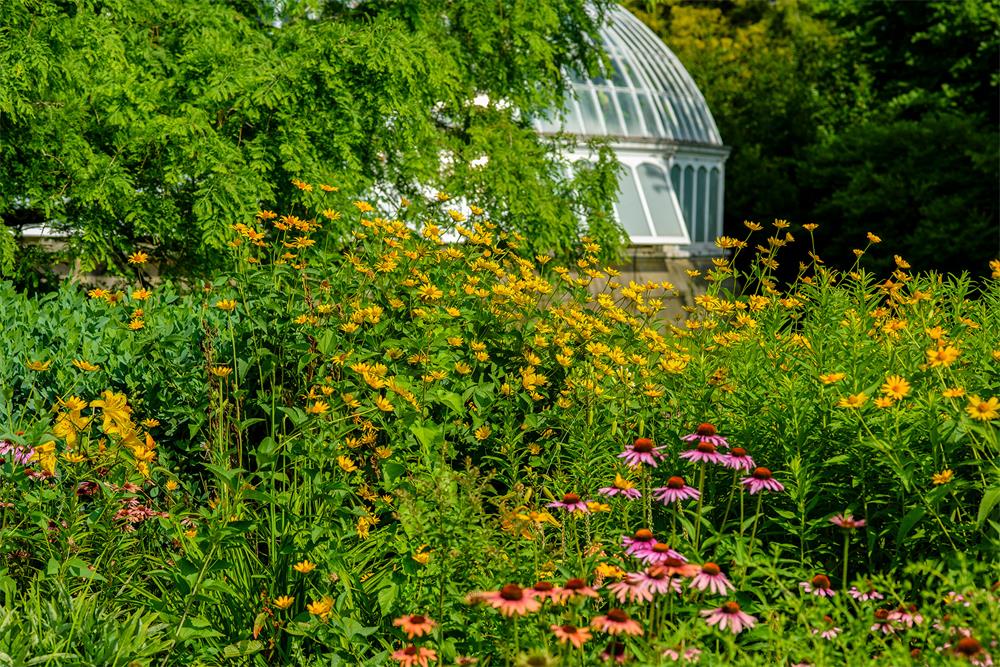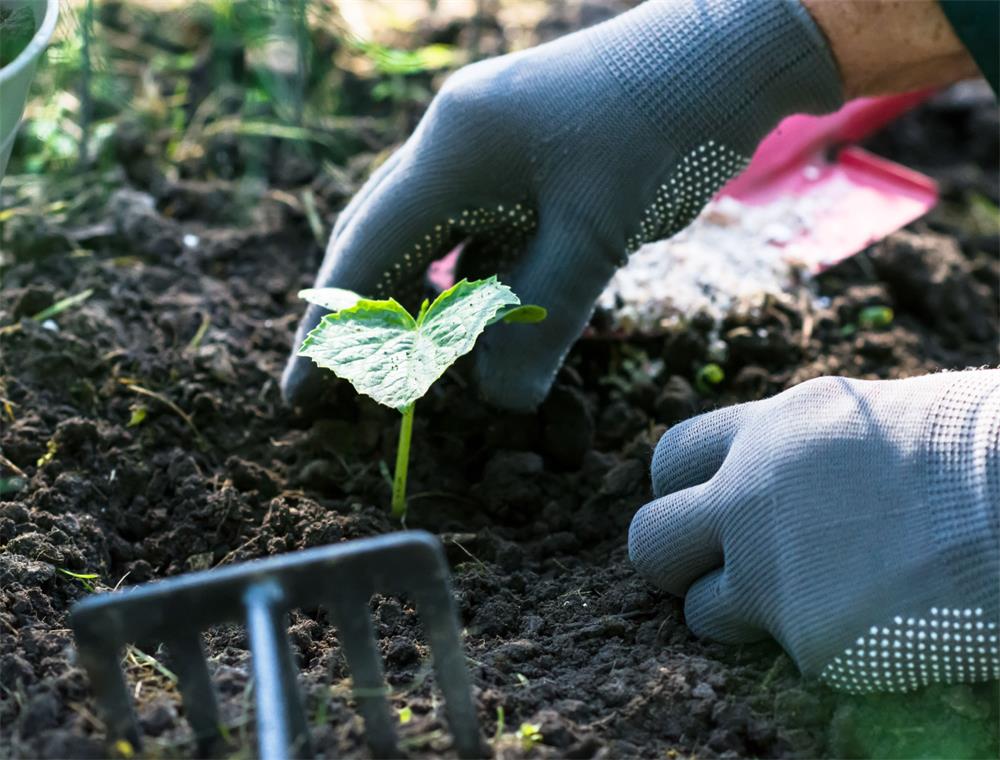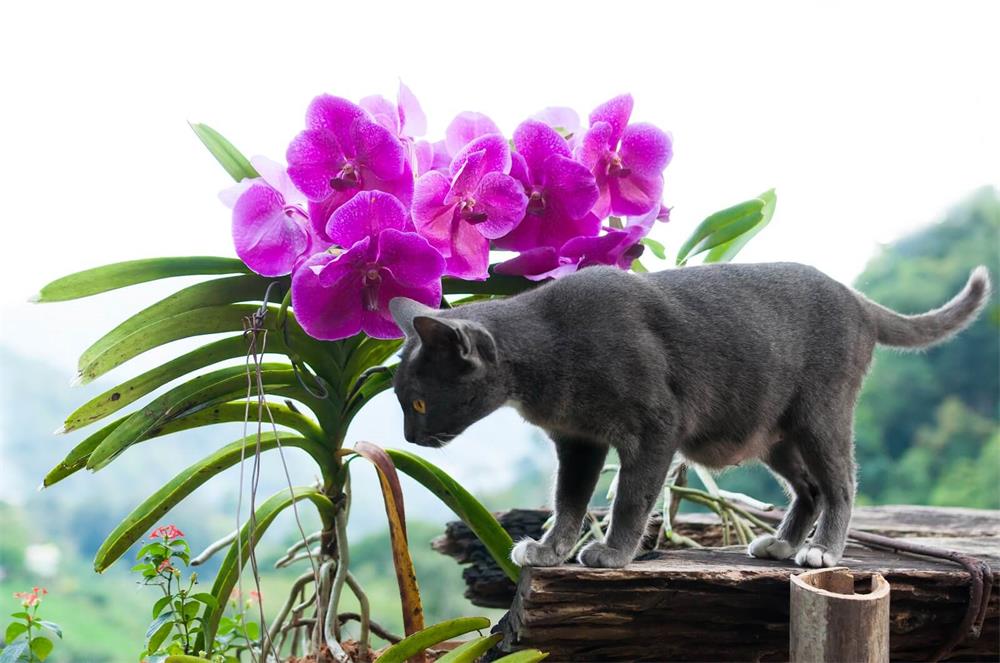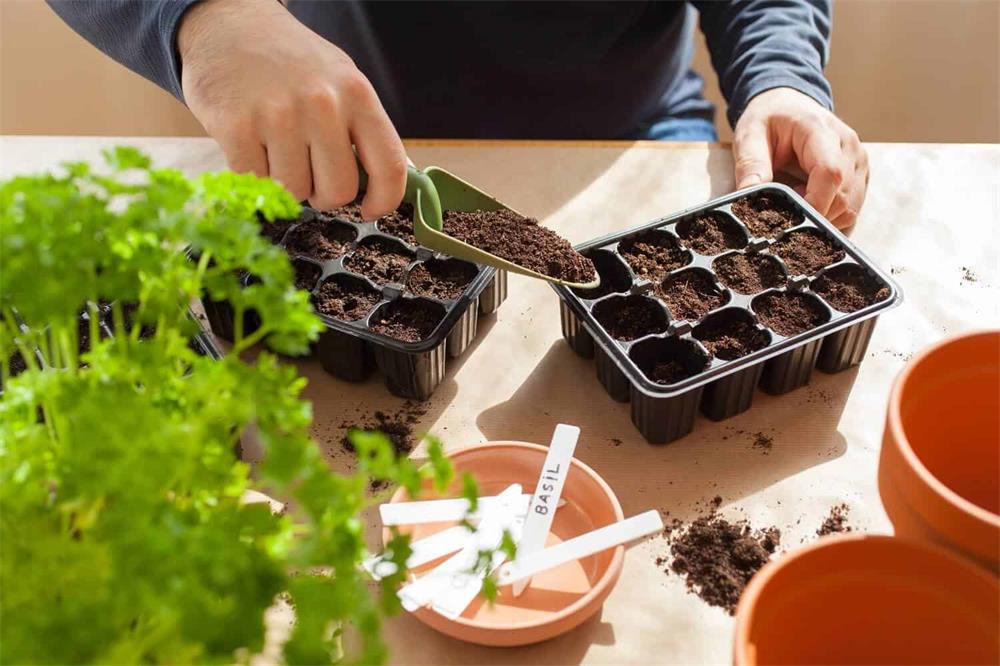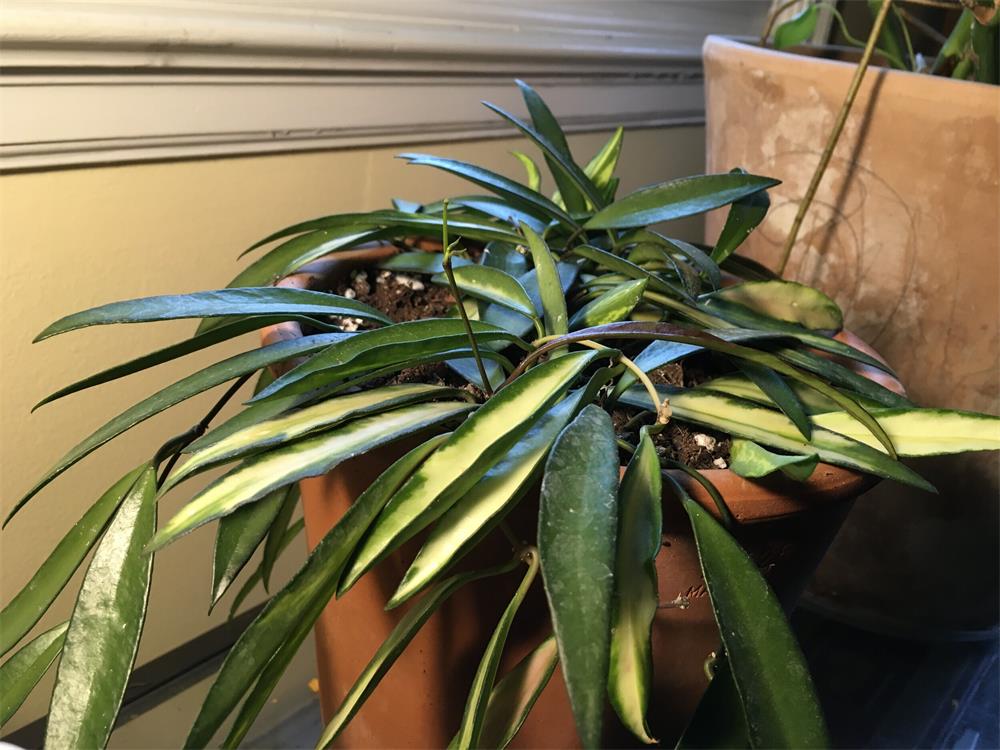
Table of Contents
Hoya Kentiana is a perennial evergreen vine that belongs to the Apocynaceae family. It is native to Southeast Asia, especially the Philippines, where it grows in humid rainforest habitats. It is also known as Hoya wayetii or Hoya shepherdii, as these species are very similar in appearance and often confused with each other. Hoya kentiana is considered a rare houseplant, but it can be a rewarding addition to your indoor collection if you provide it with the right conditions.
Hoya Kentiana has long, slender, dark green leaves that resemble string beans. They are slightly curved along the length and have prominent veins. The leaves can grow up to 10 inches long and 1 inch wide. The plant produces clusters of fragrant, reddish-purple flowers that look like fluffy balls. The flowers have a darker crown and backward-bending petals. They are pollinated by nocturnal animals such as bats and moths that are attracted to their sweet nectar. The flowers usually bloom in spring and summer, but they can also appear sporadically throughout the year.
How to Care for Hoya Kentiana
Hoya Kentiana is not a difficult plant to care for, as long as you follow some basic guidelines. Here are some tips on how to grow and maintain your Hoya Kentiana:
Light
Hoya Kentiana thrives in bright, indirect light. It can tolerate some direct sun in the morning or evening, but avoid exposing it to harsh midday sun that can scorch its leaves. A good location for your plant could be near an east-facing or west-facing window with a sheer curtain to filter the light. You can also place it in a greenhouse, a plant nursery, or a partially shaded spot in your garden if you live in a warm climate.
Soil
Hoya Kentiana prefers a rich, well-drained soil mix that is high in organic matter and has good aeration and moisture retention. You can use a commercial succulent or African violet potting mix, or you can make your own by combining one part of standard potting soil with one part perlite or orchid bark. The soil should be slightly acidic to neutral, with a pH range of 6.0 to 7.0.
Water
Hoya Kentiana needs consistent watering, but it does not like to sit in wet soil for too long. It is better to underwater than overwater your plant, as overwatering can cause root rot and fungal diseases. To water your plant properly, check the soil moisture regularly by inserting your finger into the soil. If the top three inches feel dry, it is time to water your plant thoroughly until the excess water drains out of the bottom of the pot. In summer, you may need to water your plant more frequently than in winter, when you can let the soil dry out completely between waterings. If you notice your plant’s leaves start to shrivel or curl, that means it is thirsty and needs more water.
Temperature and Humidity
Hoya Kentiana likes warm and humid conditions that mimic its native tropical environment. It can tolerate temperatures between 65°F and 80°F, but it does not like sudden changes or drafts. Keep your plant away from heaters, air conditioners, or windows that can expose it to extreme temperatures. To increase the humidity around your plant, you can use a humidifier, mist it regularly, place it on a tray of pebbles and water, or group it with other plants that create moisture.
Fertilizer
Hoya Kentiana benefits from regular feeding during its active growing season, which is from spring to summer. You can use a balanced liquid fertilizer diluted to half strength every two weeks, or a slow-release granular fertilizer every two months. Avoid fertilizing your plant in fall and winter, when it is dormant and does not need extra nutrients.
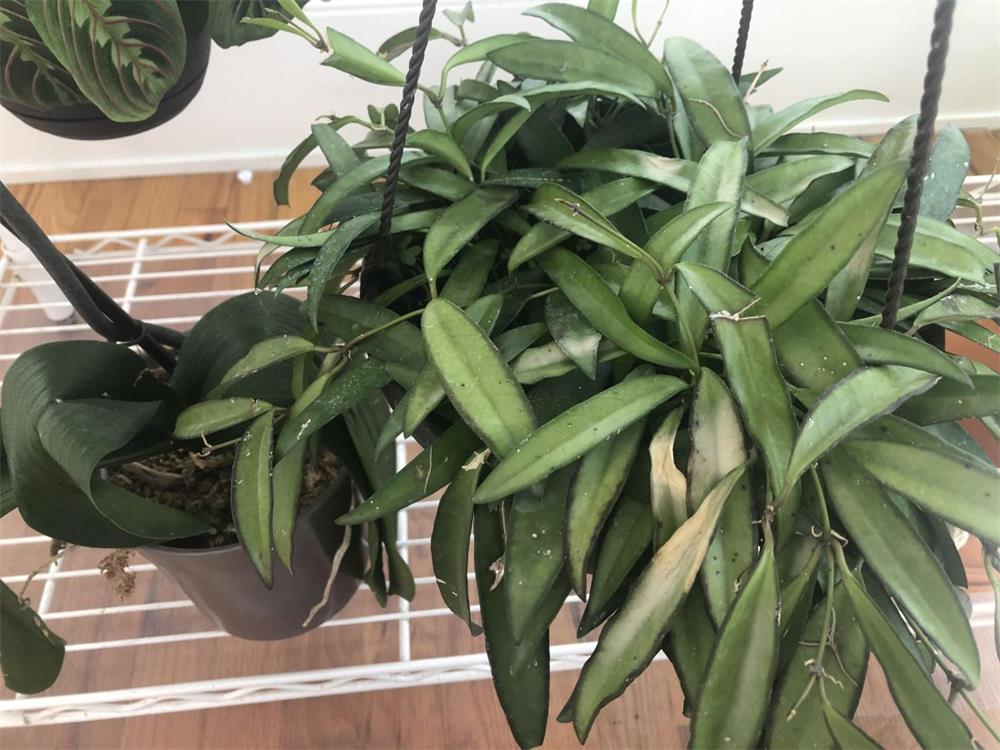
How to Prune, Propagate, and Repot Hoya Kentiana
Hoya Kentiana does not require much pruning, except for removing dead or damaged leaves and stems. You can also trim your plant to control its size and shape if it becomes too leggy or unruly. However, be careful not to cut off any flower buds or peduncles (the stalks that hold the flowers), as they will produce new flowers every year.
Hoya Kentiana can be easily propagated by stem cuttings or layering. To propagate by stem cuttings, take a healthy stem with at least two nodes (the points where leaves emerge) and cut it just below a node. Remove any lower leaves and dip the cut end in the rooting hormone if desired. Then insert the cutting
into a small pot filled with moist, well-drained soil mix. Place the pot in a warm, bright spot and keep the soil slightly moist until roots form, which may take several weeks. You can also cover the pot with a plastic bag or a dome to create a humid environment and speed up the rooting process.
To propagate by layering, take a long stem that is still attached to the mother plant and bend it down to touch the soil in another pot. Make a small cut or wound on the stem near a node and secure it to the soil with a pin or a clip. You can also apply some rooting hormone to the wound to encourage root formation. Keep the soil moist and wait for roots to develop, which may take a few months. Once you see new growth on the stem, you can cut it off from the mother plant and plant it separately.
Hoya Kentiana does not need to be repotted very often, as it likes to be slightly root-bound and does not grow very fast. However, you may need to repot your plant every two or three years if it outgrows its pot or if the soil becomes compacted or depleted. To repot your plant, choose a slightly larger pot with drainage holes and fill it with fresh, well-drained soil mix. Carefully remove your plant from its old pot and gently loosen any tangled or circling roots. Place your plant in the new pot and fill in any gaps with more soil. Water your plant well and place it in a shady spot for a few days to help it adjust to its new home.
Common Pests and Diseases of Hoya Kentiana
Hoya Kentiana is generally resistant to most pests and diseases, but it can still be affected by some common houseplant problems if not cared for properly. Some of the pests that may attack your plant include mealybugs, spider mites, aphids, scale insects, and thrips. These pests can suck the sap from your plant’s leaves and stem, causing them to wilt, yellow, curl, or drop. They can also spread diseases or viruses to your plant. To prevent or treat pest infestations, inspect your plant regularly and remove any pests by hand or with a cotton swab dipped in rubbing alcohol. You can also spray your plant with insecticidal soap, neem oil, or horticultural oil, following the label instructions carefully.
Some of the diseases that may affect your plant include root rot, fungal infections, bacterial infections, and viral infections. Root rot is caused by overwatering or poor drainage, which leads to soggy soil and decaying roots. Fungal infections are caused by high humidity or poor air circulation, which creates favorable conditions for mold and mildew growth. Bacterial infections are caused by wounds or injuries on your plant’s stems or leaves, which allow bacteria to enter and multiply. Viral infections are caused by pests or contaminated tools that transmit viruses to your plant’s cells. These diseases can cause various symptoms on your plant’s leaves and stem, such as spots, blotches, streaks, lesions, wilting, rotting, or dying. To prevent or treat these diseases, avoid overwatering or underwatering your plant, provide good drainage and ventilation, sterilize your tools before using them on your plant, and remove any infected parts as soon as possible.
How to Make Your Hoya Kentiana Bloom
Hoya Kentiana is known for its beautiful and fragrant flowers that can last for several weeks. However, some growers may find it challenging to make their plants bloom regularly or at all. Here are some tips on how to encourage your Hoya Kentiana to flower:
- Provide enough light: Your plant needs bright, indirect light to produce flowers. If your plant does not get enough light, it may not have enough energy to bloom.
- Avoid pruning: Your plant produces flowers on old stems called peduncles that remain on the plant after the flowers fade. If you prune these stems off, you will lose the chance of getting more flowers from them in the future.
- Reduce watering: Your plant needs less water during its dormant period in fall and winter. Reducing watering can help induce stress on your plant and trigger flowering in spring.
- Feed lightly: Your plant needs some fertilizer during its growing season in spring and summer to support its growth and flowering. However, too much fertilizer can cause excessive foliage growth at the expense of flowers. Use a balanced fertilizer at half strength every two weeks during this period.
- Provide cool nights: Your plant likes warm days and cool nights to stimulate flowering. Try to expose your plant to a temperature difference of about 10°F between day and night during fall and winter.
- Be patient: Your plant may take several years to mature and bloom for the first time. Do not expect your plant to bloom right away after you buy it or propagate it. Give it time to adjust and develop before it can reward you with flowers.
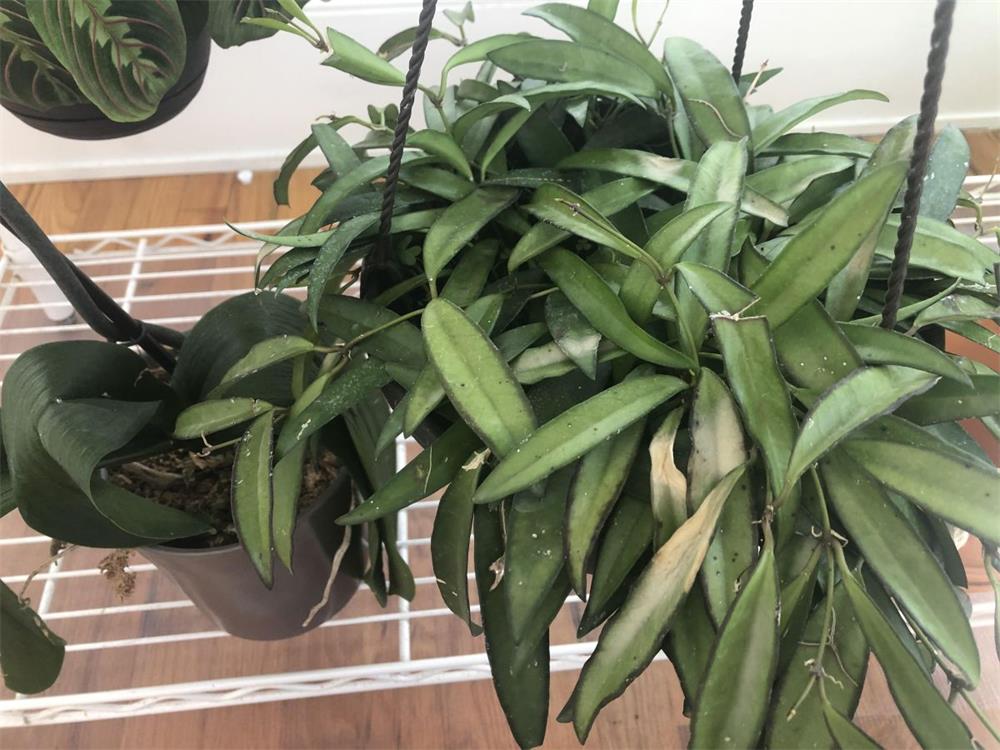
Common Problems and FAQs About Hoya Kentiana
Here are some common problems and frequently asked questions that you may encounter while growing your Hoya Kentiana:
- Why are my Hoya Kentiana’s leaves yellowing or dropping?
There are several possible reasons why your plant’s leaves may turn yellow or fall off. Some of them include:
- Overwatering or underwatering: Both extremes can cause stress on your plant and affect its leaf health. Check the soil moisture regularly and water your plant accordingly.
- Too much or too little light: Too much direct sun can scorch your plant’s leaves, while too little light can cause them to lose their color and vitality. Provide your plant with bright, indirect light for optimal growth.
- Pest or disease infestation: Pests or diseases can damage your plant’s leaves and make them weak or sick. Inspect your plant for any signs of pests or diseases and treat them as soon as possible.
- Nutrient deficiency or toxicity: Your plant needs a balanced fertilizer during its growing season, but too much or too little can cause problems. Too much fertilizer can burn your plant’s roots and leaves, while too little can cause yellowing or stunted growth. Use a balanced fertilizer at half strength every two weeks during spring and summer.
- Why are my Hoya Kentiana’s flowers falling off?
Your plant’s flowers may fall off prematurely for various reasons, such as:
- Low humidity: Your plant likes high humidity to keep its flowers fresh and healthy. If the air is too dry, your plant’s flowers may wilt and drop off. Increase the humidity around your plant by using a humidifier, misting it, or placing it on a tray of pebbles and water.
- Temperature fluctuations: Your plant does not like sudden changes in temperature that can shock its system and affect its flowering. Keep your plant in a stable environment with temperatures between 65°F and 80°F, and avoid exposing it to drafts or extreme heat or cold.
- Poor pollination: Your plant’s flowers are pollinated by nocturnal animals in nature, but indoors, they may not get enough pollination to set seeds and prolong their lifespan. You can help your plant by gently shaking its flowers or using a small brush to transfer pollen from one flower to another.
- Natural cycle: Your plant’s flowers have a natural cycle of blooming and fading, which may vary depending on the variety and the conditions. Some flowers may last for several weeks, while others may last for only a few days. Enjoy them while they last and look forward to the next blooming season.



